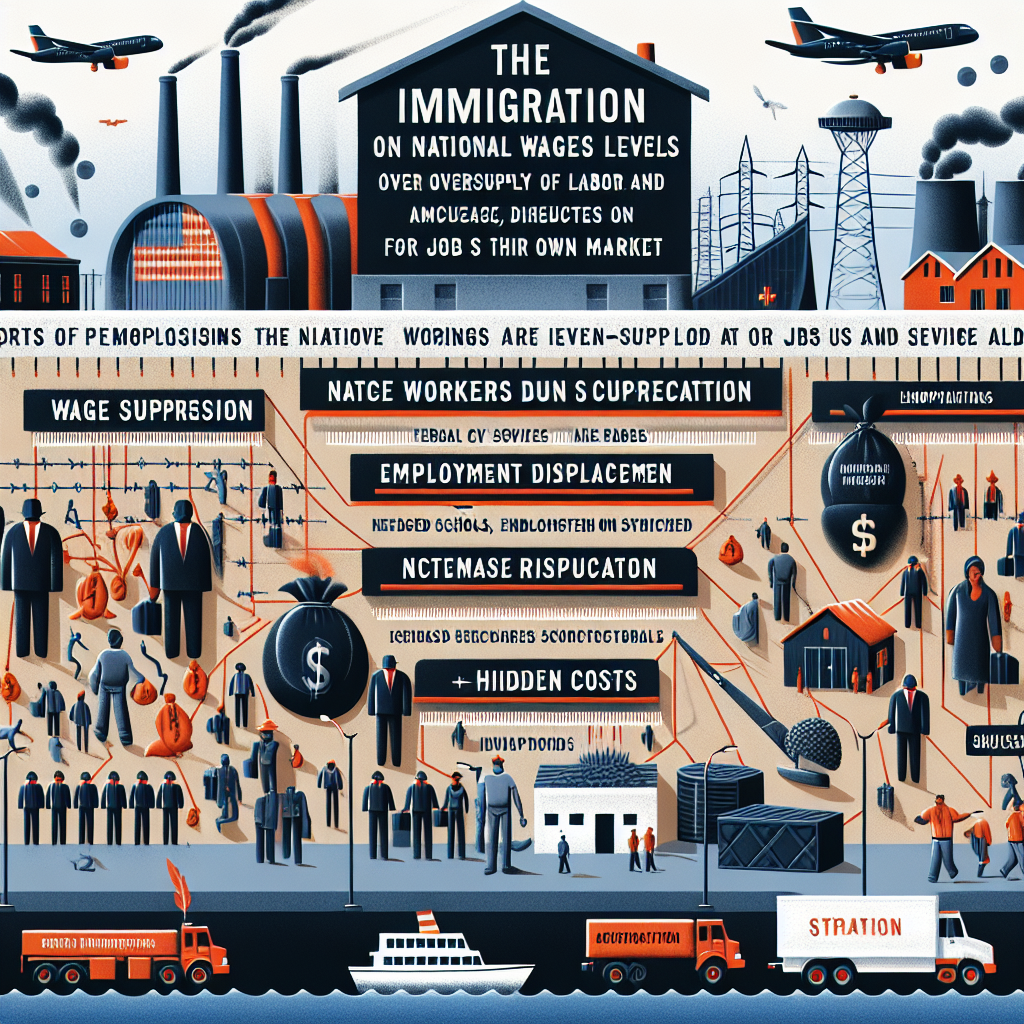The Effects of Immigration on National Wage Levels
In today’s America, the issue of unchecked immigration cannot be ignored any longer. The influx of immigrants into the United States has profound implications, many of which strike at the very heart of our economic well-being. One of the most pressing concerns is the impact of immigration on national wage levels. This challenge not only affects the economic stability of American workers but also threatens to widen the gap between the wealthy and the working class.
Immediate Wage Suppression
One of the most glaring effects of unregulated immigration is wage suppression. An oversupply of labor forces wages down, especially in low and medium-skilled jobs. These are the sectors where illegal and legal immigrants most frequently compete with American workers. When companies have access to an abundance of labor, there is less incentive to offer competitive wages. As a result, native workers find it increasingly difficult to secure jobs that pay a living wage.
Employment Displacement
Another consequence is employment displacement. Native workers are being pushed out of job markets they once dominated. Industries such as construction, agriculture, and service sectors are seeing more and more immigrants, both legal and illegal, occupying roles that once contributed to the livelihood of American families. This displacement doesn’t just affect wages; it also depletes opportunities for upward mobility and career advancement.
Case Studies and Statistics
- According to a recent study by the National Bureau of Economic Research, immigration reduces wages for native-born workers by between 0.7% and 3.4%, depending on the skill level.
- A Harvard University study found that a 10% increase in the immigrant-to-native ratio in a workforce leads to a 2-3% reduction in wages for native workers.
Economic Strain on Public Services
The economic challenges don’t stop at wage levels. Increased immigration places a significant strain on public resources and services. Schools, hospitals, and social services are overwhelmed by the rising number of people who need assistance. These resources, funded by American taxpayers, are increasingly diverted to support individuals who, in many cases, do not contribute equivalently to the tax system. This financial drain further exacerbates economic inequality and poses questions about the sustainability of our public services.
The Hidden Costs
The hidden costs of immigration are numerous and should not be underestimated. These costs include but are not limited to:
- Taxpayer Burden: With increased demand for public services, taxpayers are forced to shoulder a higher financial burden. This affects everyone, but especially those who are already struggling to make ends meet.
- Crime and Security: Enhanced border security and law enforcement are necessary to manage illegal immigration, drawing resources away from other critical areas.
- Infrastructure Stress: Roads, public transport, and housing face increased pressure, leading to deterioration and higher maintenance costs.
In short, the effects of immigration on national wage levels and broader economic conditions are not abstract. They are real, tangible, and increasingly detrimental to the future of American workers. It is imperative that we take a hard look at our immigration policies and reform them to protect the interests of our nation’s citizens. The time for action is now. Our economic stability, our way of life, and our future depend on it.





